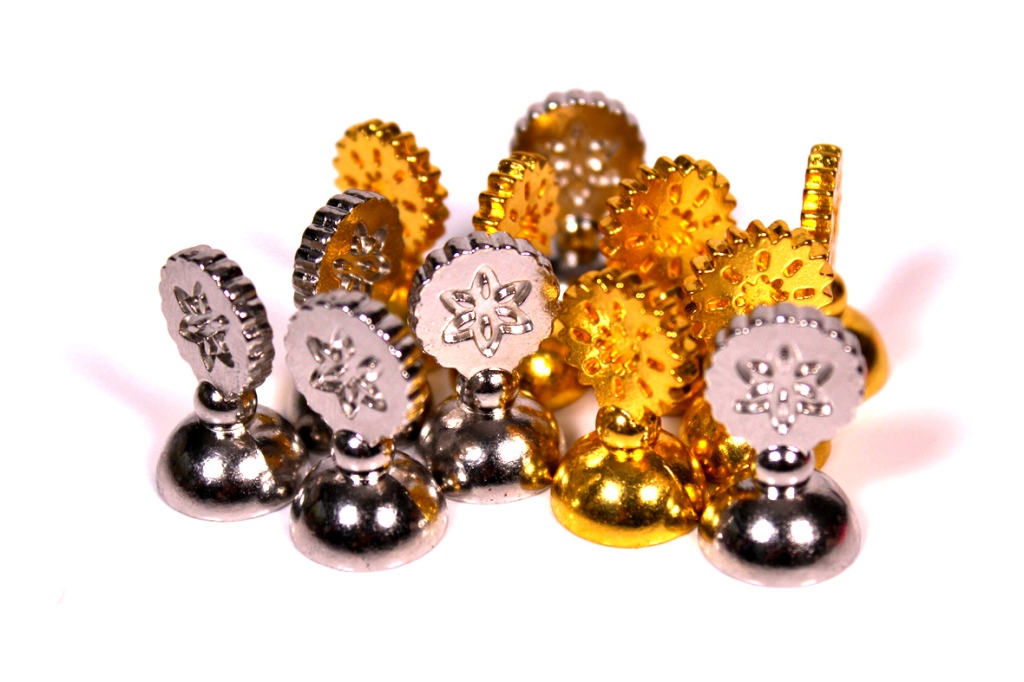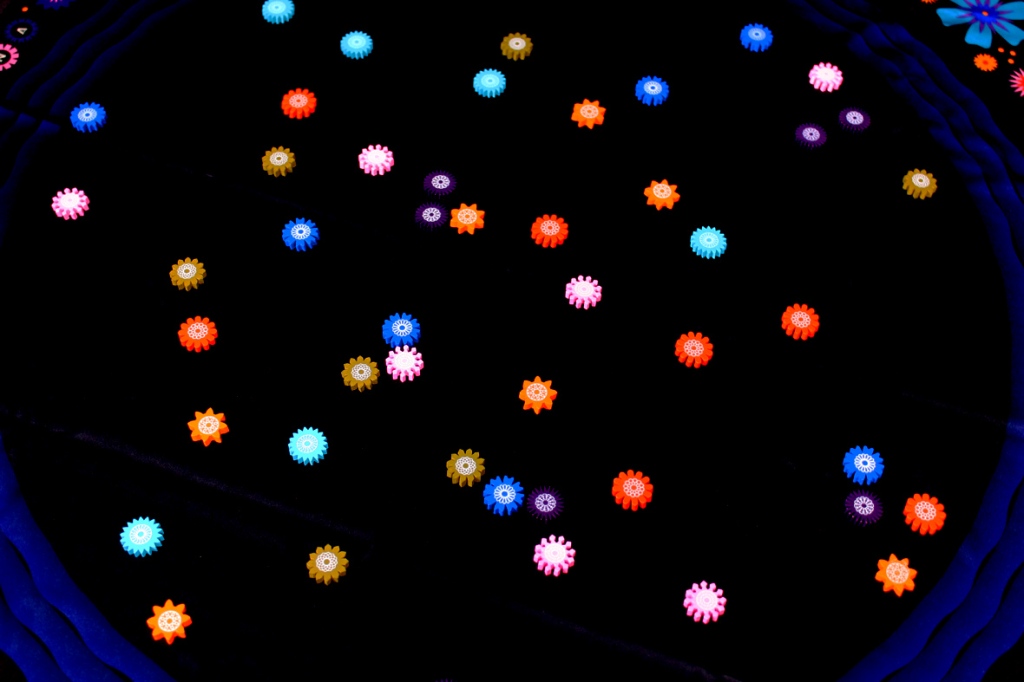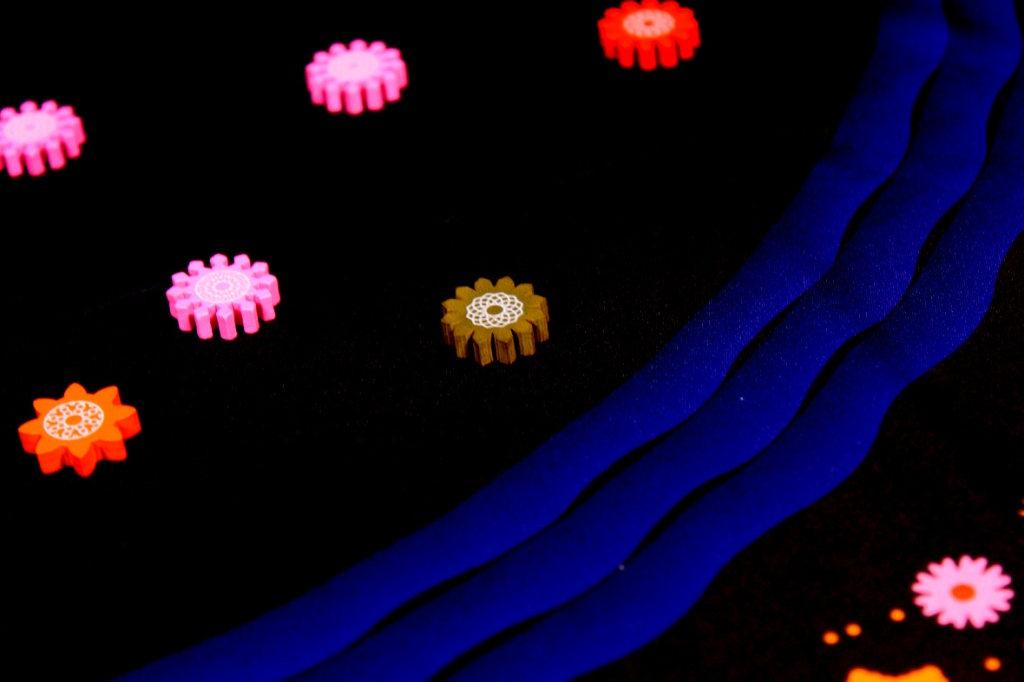
Base price: $40.
2 players.
Play time: 10 – 15 minutes.
BGG Link
Buy on Amazon (via What’s Eric Playing?)
Logged plays: 2
Full disclosure: A review copy of Lacuna was provided by CMYK.
I need to stop watching TV shows with British characters while I write. It affects my writing style in, I’d like to say subtle, ways, but mostly I start using a strange English inflection. There’s a speaking pattern to it all. I’m trying to avoid it, but if you see a weird usage of “colour” or I say “maths”, I’m going to blame a late-night Ted Lasso session with one of my buds. Anyways, Lacuna coming up.
In Lacuna, you’re two friends collecting flowers on top of a moonlit pond at night. Very charming and pleasant. The challenge is trying to collect more of one color than your opponent. Seek the balance between two flowers and figure out how you can collect the most if you want to win. Even if you don’t win, it’s a lovely evening. But will you be able to get the most flowers?
Contents
Setup
Easy. Set out the board:

Give each player a set of pawns:

Then, place the flower tokens into the box and shake them up, pouring them out (using the spout) on the board. Once you do, distribute them so they’re roughly equally spread out and all within the main circle of the board. You can set the ruler aside, for now, but you should be good to start!

Gameplay

This one’s an interesting one. Bit of area control, bit of blocks and majorities. You’ll see. The game takes place in two phases. Let’s dive in.
In the first phase, players place their pawns on alternating turns between any pair of tokens of the same color and shape, provided there’s a direct line between the two tokens that the pawn can sit on. These lines are fairly arbitrary, and your pawn does not need to be in the center of the line. Have fun with it. Once you play the pawn, you get to take and keep both tokens! Neat. You love to see it.
After all pawns have been played, the second phase of the game begins! This one’s so simple that there isn’t even strategy to it. It’s literally just for every remaining flower token on the board, the player whose pawn is closest takes it and adds it to their stock. Keep going like that until all the pieces are claimed. If you’re not sure who’s closer, well, that’s what the ruler is for. If it’s a tie, well, go for the second-closest token.

Now, the clincher is this: for each color, the player who has at least four tokens in that color wins that color. The player who wins at least four colors wins the game! Keeps it pretty simple.
Player Count Differences
None! Two-player only game.
Strategy

- Figure out where your opponent isn’t and be there. You want to eventually capture a lot of pieces by virtue of being closer to them than your opponent is, so look for that sort of thing. If they’re playing to cover the center, play towards the dead center. If they’re covering the edges, you might be able to get a bunch of pieces from the places they naturally can’t cover.
- You can go wide or go deep, but remember to pick one and stick with it. If you split your focus, you run the risk of your opponent exploiting your indecision. I find trying to win at least two colors going into the final phase can be helpful, but it’s far from an exact science.
- Placing your tokens to block your opponent’s plays is not a bad idea. If you make it harder to place in certain spots, you may force them to make suboptimal plays elsewhere.
- Stalling the game to actually measure pieces is not a good look. I wouldn’t recommend it because it’s frustrating in a non-strategic way. It also slows the game down!
- You need to be okay at estimating. Sometimes you need to be able to look at two pieces and figure out which one’s closer to a third piece. I usually try to do this by getting between the two and seeing if they have the same angle. Once I’ve done that, it’s usually easier to determine which is closer.
- Don’t fight too hard for single tokens. It’s truly not worth a pawn to only get one piece, and it’s certainly not worth it to try and get a token with two pawns.
Pros, Mehs, and Cons
Pros
- I really like the piece distribution system, generally. It’s fun to put a bunch of pieces into a box, shake them up and dump them. It has a similar vibe to setting up a game like Hammer Time. I love that.
- The art is a lot of fun, as is the theme! It’s a pleasant game similar to Lotus in that flowers are just nice sometimes without having a lot of extra pressure to them. I really like that the placement is on top of a very pleasant lake. The flowers have a nice color to them as well.
- I love metal pieces, and they’ve got a nice weight to them to boot. The pawns are an excellent weight and quality, and they’re very fun to use over the course of the game.
- The actual mechanics of the game are super interesting! I like that there’s a lot of spatial estimation as a mechanic. You don’t see it much and it makes for an interesting game.
- A very easy game to reset and play. You just scoop up all the flowers, throw them back in the box, and distribute them again! It’s fast and loose.
Mehs
- I do wish that the mat were a different texture, but that’s mostly for photography reasons. It reflects light in a way that thicker neoprene mats don’t. Oh well.
- You may want to give players who struggle with spatial reasoning either more time or the ruler. I think there’s a lot to be said about the spatial reasoning genre for some players that struggle with that sort of thing more. This game is going to zero in on their frustrations to the max, since that ability to estimate distances is critical here.
Cons
- It would be nice if the pieces weren’t quite so round; I frequently have to deal with them rolling away. When you dump the flowers out, they tend to roll since they’re circles and thicker than, say, coins. It’s a whole thing.
- I do hate cylinder boxes. They’re the worst but it is a very good-looking box. I just can’t really put it anywhere that’s not on top of something.
Overall: 7.5 / 10
Overall, I think Lacuna is fun! I particularly like these kinds of games since they’re a bit more out there and whimsical, though I did want a bit more interactive of an experience. I like that you take the pieces as they fall, but having the ability to mess with them or move them or add more would have been fun. As it currently stands, it’s very easy to have a point in the game where it’s decided and that can feel a bit anticlimactic. I think more would take away from the casual elegance of the game, but a reviewer can dream. Honestly, my biggest gripe with the game ends up being a loose collection of practical things: my photos were all a mess because of the mat’s texture, I can’t store a cylinder box anywhere on my shelves, and when I tried to pour the flower tokens onto the mat, a few rolled off the table. These have next to nothing to do with gameplay; they’re just frustrating. When it comes to the game itself, it’s rather elegant and low-key. My friend liked it less because she wanted something more interactive, but I enjoyed the challenge of trying to loosely estimate distance without a clear indicator of whether or not you’re close. By the time you’ve placed your final pawn, the game is decided: everything else in the game is just tallying. I could see this being a couple’s go-to favorite game, to be honest. It has that perfect two-player thing where you can quickly pick up and play a game and then play again if you’re not satisfied with the result. Plus it’s got a fun theme, bold colors, and an overall pleasant aesthetic. I’d like to play Lacuna again at some point, and if you’re a fan of spatial reasoning, you like games that are a bit more off-the-wall, or you just don’t mind a cylinder game box, you might enjoy Lacuna as well!
If you enjoyed this review and would like to support What’s Eric Playing? in the future, please check out my Patreon. Thanks for reading!